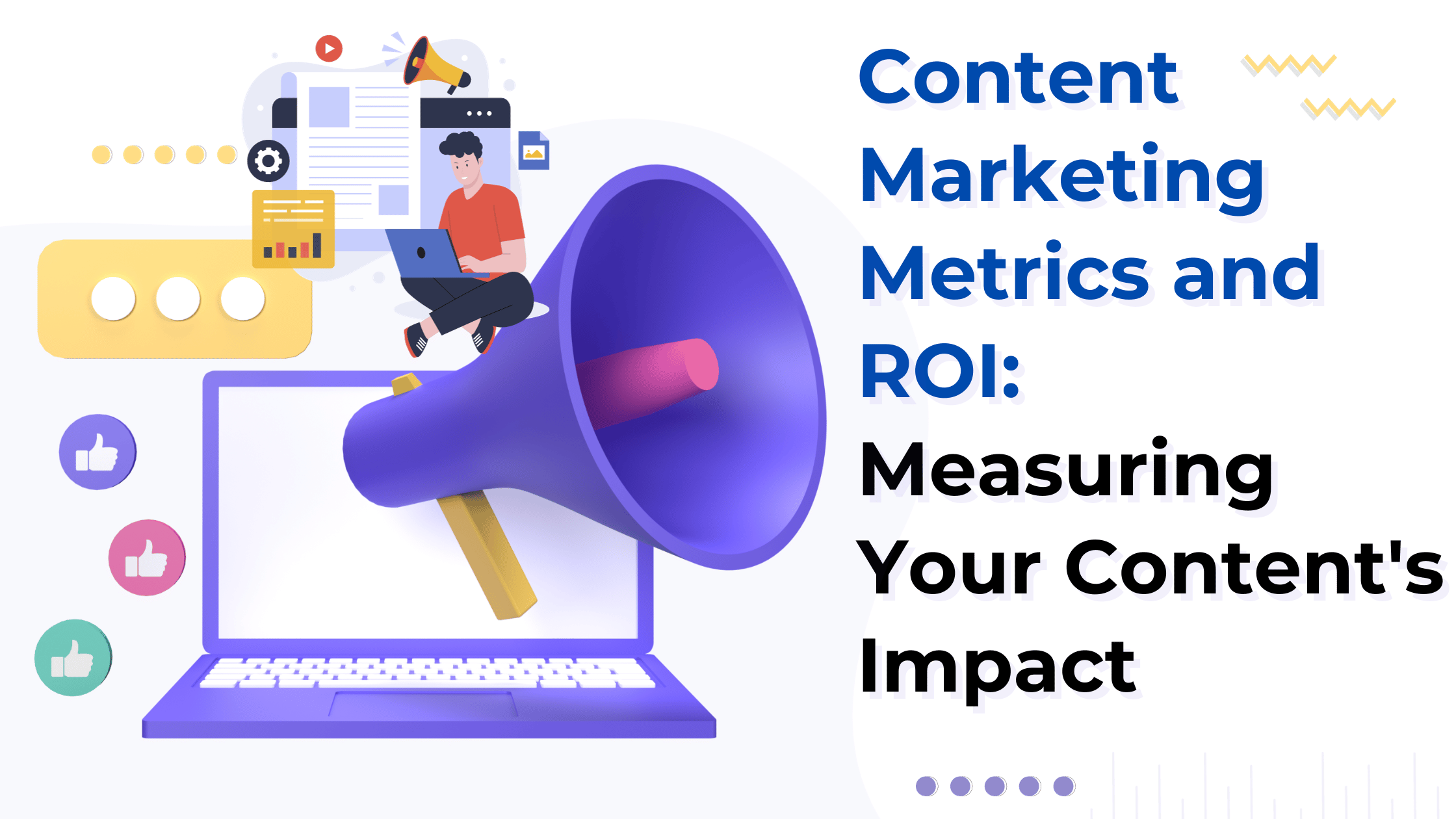Content Marketing Metrics and ROI: Measuring Your Content’s Impact
Content marketing is a powerful tool for businesses, but to truly harness its potential, you need to understand how to measure its impact. In this comprehensive guide, we’ll explore the world of content marketing metrics and return on investment (ROI). You’ll learn why these metrics matter, which ones to track, and how to calculate the ROI of your content marketing efforts.
Why do content marketing metrics and ROI matter?
1. Data-driven decision making
Performance Insights: Metrics provide valuable data for informed decision making.
Resource allocation: Understand which content efforts are most effective to allocate resources wisely.
2. Accountability and Measurement
Demonstrate value: Metrics help prove the value of content marketing to stakeholders.
Continuous improvement: Regular measurement allows optimization and improvement.
3. ROI Determination
Financial Accountability: Calculate return on investment to assess financial impact.
Alignment with goals: Determine whether content marketing efforts are aligned with business objectives.
Key Content Marketing Metrics to Track
1. Website Traffic
Unique Visitors: Measure the number of individual visitors to your website.
Page Views: Track the total number of pages viewed on your site.
2. Conversion Rates
Click-through rate (CTR): Calculate the proportion of visitors who click on a certain link.
Conversion rate: Count the proportion of site visitors who carry out a desired action, like making a purchase or completing a form.
3. Engagement metrics
Time on Page: Measure how much time users spend on your content.
Bounce rate: Keep track of the percentage of site visitors who leave after only seeing one page.
4. Social Media Engagement
Likes, Shares and Comments: Monitor social interactions with your content.
Follower Growth: Track the growth in your social media followers.
5. Email Marketing Metrics
Open Rate: Measure the percentage of recipients who open your email.
Click-through rate (CTR): Track the percentage of email recipients who click on a link in your email.
6. SEO Performance
Keyword Ranking: Monitor the ranking of your content for targeted keywords.
Organic Traffic: Calculate the volume of traffic brought about by organic search.
7. Lead Generation
Generated Leads: Track the number of leads generated through content.
Lead Quality: Assess the quality of leads generated through content efforts.
8. Customer Retention and Loyalty
Churn rate: Measure the percentage of customers who stop doing business with you.
Customer Lifetime Value (CLV): Calculate the total revenue generated by a customer over his lifetime.


Calculating Content Marketing ROI
1. Cost calculation
Content production costs: Calculate the expenses associated with content creation.
Distribution costs: Include expenses related to promotion and distribution of content.
2. Revenue Attribution
Attribution model: Determine how to attribute revenue to content marketing efforts.
Tracking Conversions: Use tracking tools to link revenue to specific content pieces.
3. ROI Formula
ROI (%) = (Net Profit/Cost of Investment) x 100
Net Profit = Revenue Generated – Investment Cost
Also Read:
Content Delivery Strategies: Maximizing the Reach of Your Content
Challenges and ideas
1. Data Accuracy and Integration
Data Sources: Ensure that data from different sources is integrated for an accurate and holistic view.
Data Privacy: Follow data privacy rules when collecting and storing user data.
2. Long-term vs. short-term goals
Balancing Act: Content marketing ROI can vary in the short term vs. long term.
Setting expectations: Align ROI expectations with your content marketing goals.
3. Quality vs. Quantity of Content
Quality matters: Focus on creating high-quality content that your audience will love.
Volume Effect: Consider how scaling up content production can impact ROI.
The future of content marketing metrics and ROI
As technology and marketing strategies evolve, so will we measure the success of content marketing. Here are some anticipated developments:
1. AI-powered analytics
Predictive analytics: AI will provide predictive insights for content performance.
Real-time optimization: AI will help optimize content in real-time for maximum impact.
2. Attribution Modeling Advancements
Advanced attribution models: New models will provide more accurate revenue attribution.
Multi-touch attribution: A more nuanced understanding of how content impacts conversion paths.
3. Blockchain for data transparency
Data Verification: Blockchain can be used to verify data accuracy and transparency in reporting.
Increased Trust: Increased trust in data can lead to more accurate ROI calculations.
Conclusion
Understanding content marketing metrics and ROI is essential to proving the value of your content efforts and making data-driven decisions. By tracking key metrics, calculating ROI, and staying abreast of emerging trends and technologies, you can maximize the impact of your content marketing strategy and demonstrate its contribution to the success of your business.



